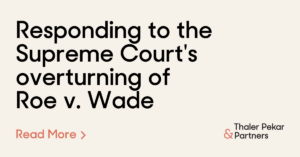4 min read
The Weight of my TEDx Talk Flub

This past October, I delivered a TEDx Talk. It wasn’t perfect; I flubbed a punchline. It weighs on me. But ultimately you, the intended audience, interact with the video and my somewhat out-of-the-box approach and determine if or how much the botch pops.
Rather than pushing messages at an audience, I believe inviting you into understanding is more meaningful and has more lasting impact. Adults learn best through direct experience. That’s why, if I am leading an exploration into better listening, I will quickly facilitate a listening exercise. If my audience is interested in the communicative value of story, I will open by guiding them in an exercise in sharing stories.
For example, within three minutes of taking the stage at Inspirefest (now Future Human), I brought up the house lights and asked the 2,000 people in the Bord Gais Theater audience to turn to a stranger and share a story. (You can watch that 11-minute keynote here.) As people were talking with each other, the director, who had been hesitant about my plan, walked over to me with a big smile, pointed to two people laughing in the highest balcony and asked, “What do you think those two are chatting about?” The next day while I was walking around Dublin, several people who had been in the audience recognized me and eagerly shared what they and their story partner chatted about.
A TEDx talk is different. It must be delivered with you, the future internet audience, in mind. The video of a TEDx talk cannot be edited. Given that, even a few minutes of a presenter’s silence while allowing for the audience to interact with each other would translate to “dead air.” And without being able to edit that dead air out, my TEDx talk would have no chance of garnering a significant online audience — the goal for the TEDx organizers, the TED mothership, and, frankly, me.
So, while I know just five minutes of audience interaction will ensure an experience of curiosity and connection, the constraints of TED meant I had to find another way to accomplish this resonance. I want my “great idea worth spreading” to become yours. I want you to explore it, internalize it, remember it, and apply it.
You’ll see that for structure, I apply our Heart, Head & Hand® model. I open with a humorous personal story to elicit your trust and confidence, and to prompt your personal reflection. Next, I offer examples of my great idea in action. I close by asking you to immediately apply this idea and advising you how to do so.
The talk had to be memorized, and I had only one opportunity for delivery. There was no “take 2” at this TEDx. Every sentence carried weight. Every single word mattered.
That’s why it’s so upsetting that when I was on that stage, in front of that camera, I got one word wrong! I messed up the very last word in my humorous opening story. The comedic crescendo. The pivotal transition point to the substance of the talk.
The one word had nothing to do with my big idea or my call to action. This one blunder has everything to do with my new understanding of what is expected from a TEDx talk, with the perfectionism required, and with the performative nature of recording for the internet. I honed empathy for comedians who risk not nailing a joke, for actors who memorize lines and perform live, and for my clients who are refining their own communication capabilities.
I’ve learned the weight of one word and the promise of an entire talk.
In fact, my TEDx talk is about how simple stories aren’t representative of who we fully are. And my TEDx experience wasn’t simple. It was downright messy and paradoxical! I chose to advocate for a shift away from simple stories on a platform that rewards simplicity. I made a mistake that brought me to tears, and I thoroughly enjoyed myself. I have tremendous respect for each authentic person with whom I shared that stage, and I disdain the emulous nature of being heard as a TEDx speaker. I am delighted to have shared my Big Idea, and I abhor the gamification of getting even 31 seconds of a YouTube view.
And, overall, this complicated and beautiful experience has increased my trust, understanding, and confidence in myself and in others.
Thaler Pekar & Partners is internationally-recognized for its deep expertise in narrative, story, and communication. Both the BBC and the Smithsonian Institution have hailed the founder, Thaler Pekar, as one of the world’s leading experts on institutional storytelling.
For 14 years, the team at Thaler Pekar & Partners has advised visionaries on being understood and influential. Our trademarked communication processes — Heart, Head, & Hand®, Engagement Equation® and Invitational Incline® — provide leaders with the confidence to speak, listen, and be heard, and sustain them in offering effective motivation. As a result, teams are more productive, audiences are more receptive, and visibility increases.
Our award-winning work ranges from gathering 178 oral histories across four continents and six countries for Chuck Feeney’s The Atlantic Philanthropies; to finding and refining stories about integrity for Novartis senior leadership; to coaching a mainstage TED Talker; and to developing a communication and story skills academy for L’Oreál International Educators and Customer Representatives.







